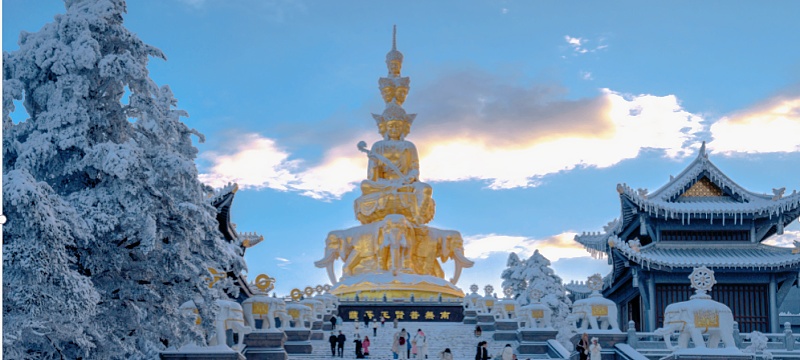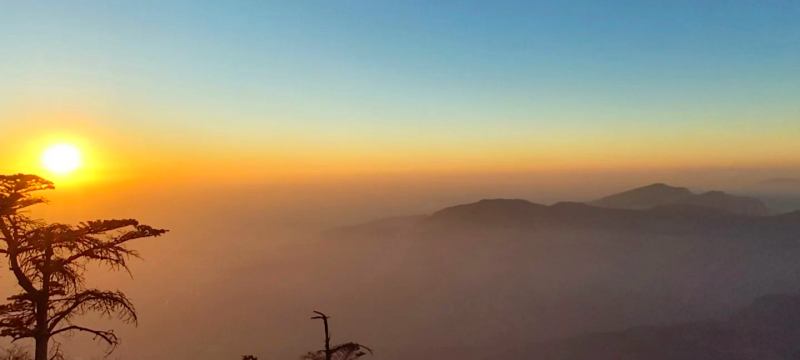





Mount Emei
Sacred Buddhist mountain in Sichuan, China. Famous for its lush forests, golden summit, wild monkeys, and the towering Giant Buddha of Leshan nearby.
1. Attraction Introduction
Mount Emei, a UNESCO World Heritage Site in Sichuan Province, is one of China's Four Sacred Buddhist Mountains. Rising to 3,099m at its Golden Summit (Jinding), it’s famed for its cloud seas, sunrises, and the 10-meter-tall Samantabhadra Golden Statue. The mountain blends ancient temples (like Baoguo and Wannian), dense forests, and wild monkeys. A pilgrimage site for 2,000 years, it’s also a biodiversity hotspot with over 3,000 plant species.
2. Historical Background
Mount Emei, one of China’s Four Sacred Buddhist Mountains, has a history dating back over 2,000 years. It is believed that Buddhism was introduced to the mountain as early as the 1st century AD during the Eastern Han Dynasty. Over time, it became a significant center for Buddhist practice, particularly as the sacred site of Samantabhadra Bodhisattva (Puxian 菩萨).
During the Tang (618–907) and Song (960–1279) dynasties, many temples and monasteries were built, solidifying Mount Emei’s reputation as a major Buddhist pilgrimage site. The mountain’s most famous landmark, the Golden Summit (金顶), features a massive 48-meter-high golden statue of Samantabhadra, attracting devotees and tourists alike.
In 1996, Mount Emei, along with the nearby Leshan Giant Buddha, was designated a UNESCO World Heritage Site for its rich cultural heritage and exceptional natural beauty. Today, it remains a revered site for both Buddhists and nature lovers, offering a mix of spiritual retreats, scenic hiking trails, and breathtaking mountain views.
3. Map & Key Spots
Baoguo Temple: Entry point; houses a 7-ton bronze bell.
Qingyin Pavilion: Picturesque riverside pavilions.
Wannian Temple: Home to a 62-ton bronze Samantabhadra statue.
Golden Summit (Jinding): Sunrise views and the golden statue.
Monkey Zone (Natural Ecology Trail): Wild macaques (caution advised).
4. Suggested Route
2-Day Classic Route:
Day 1: Baoguo Temple → Qingyin Pavilion → Wannian Temple (cable car) → Stay at Jieyindian.
Day 2: Hike to Golden Summit for sunrise → Leidongping → Descend.
Shortcut: Direct bus to Leidongping (2.5hrs), then cable car to Jinding.
5. Best Season / Seasons to Avoid
Best: April–October (mild weather; avoid summer holidays for crowds).
Avoid: December–February (icy trails; some temples close).
6. Transportation Guide
Location: Emeishan City, Sichuan Province, China
From Chengdu:
Train: Chengdu East → Emeishan Station (1.5hrs, 54RMB), then bus to scenic area (20min, 20RMB).
Bus: Xinnanmen Station → Emei Town (2hrs, 45RMB).
Private Car: Chengdu → Emei (2hrs via G93; tolls ~60RMB).
Nearest Airport: Chengdu Shuangliu (120km, 2hrs drive).
7. Ticket Prices & Fees
Entrance: 160RMB (peak season); 110RMB (off-season).
Eco-bus:
Baoguo Temple → Leidongping: 90RMB (round-trip).
Cable Cars:
Wannian Temple → Wannian Parking Lot: 65RMB (up), 45RMB (down).
Leidongping → Jinding: 120RMB (round-trip).
Optional: Temple stays (200–500RMB/night).
8. Special Notes
Monkeys: Avoid carrying food visibly; staff sell bamboo sticks for safety (5RMB).
Altitude Sickness: Jinding is 3,099m; acclimate at mid-mountain temples.
Luggage Storage: Available at Baoguo Temple (10RMB/day).
Closed Areas: Hiking trails may close in winter due to ice.
Sunrise: First cable car to Jinding departs at 5:30 AM (arrive by 4:30 AM).
